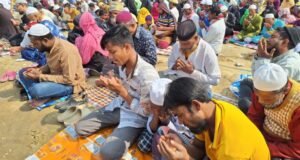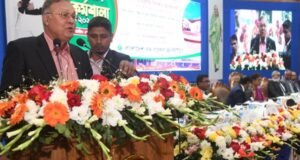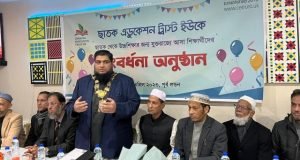 Kurdish fighters in northern Syria say they have captured a key town from Islamic State, just 50km (30 miles) from the group’s headquarters at Raqqa.
Kurdish fighters in northern Syria say they have captured a key town from Islamic State, just 50km (30 miles) from the group’s headquarters at Raqqa.
A spokesman for the the Popular Protection Units (YPG) said Ain Issa and its surrounding villages were now under the militia’s “total control”.
It follows the capture on Monday night of a military base outside the town.
The YPG captured the town of Tal Abyad on the Turkish border last week, cutting a major supply line for IS.
The jihadist group has suffered a string of defeats to Kurdish forces since being forced to withdraw from the town of Kobane in January after a four-month battle.
IS defences ‘pushed back’
The Kurds’ rapid advance through Raqqa province continued on Monday with the fall of Brigade 93, a base which IS captured from the Syrian military last year.
The Syrian Observatory for Human Rights, a UK-based monitoring group, reported that the YPG and allied Syrian rebel fighters overran the base before heading south towards Ain Issa, supported by US-led coalition air strikes.
By Tuesday afternoon, they had taken full control of the town and nearby villages, YPG spokesman Redur Xelil told the Reuters news agency.
“Islamic State’s defensive lines have now been pushed back to the outskirts of Raqqa city because the area between Raqqa and Ain Issa is militarily weak and they have no fortifications,” Rami Abdul Rahman, the Syrian Observatory’s director, told the AFP news agency.
Ain Issa is situated at an intersection of the main roads from Raqqa to other IS-held areas in Aleppo province, to the west, and Hassakeh province, to the east.
Raqqa is the de facto capital of the caliphate whose creation IS announced a year ago after it captured large swathes of northern and western Iraq.
As well as cutting an IS supply line, the YPG’s capture of Tal Abyad allowed the Kurds to link up other pockets they control along the Turkish border, from Iraq in the east to Kobane in the west.
In a separate development on Tuesday, IS published photographs of what it said was the destruction of Islamic shrines near the ancient ruins of Palmyra.
The images showed militants blowing up two sites described as “manifestations of polytheism in the town of Tadmur”, the modern settlement situated next to the Unesco World Heritage site.
Last week, the Syrian Observatory said IS had planted landmines and explosives around the ruins of Palmyra, amid reports that government forces were regaining nearby areas lost to the jihadists in May.
‘Unspeakable suffering’
Meanwhile, UN investigators have denounced the seemingly deliberate targeting of civilians by all sides in the conflict in Syria, saying it has led to “unspeakable suffering”.
“Civilians are the main victims of an ever-accelerating cycle of violence,” Paulo Pinheiro, who heads the UN Human Rights Council’s independent commission of inquiry on Syria, said following the publication of its report into abuses committed from 15 March to 16 June.
Mr Pinheiro said government forces, rebel groups and IS had imposed sieges to “devastating effect”, causing malnutrition and starvation among residents.
He also condemned indiscriminate attacks on civilian areas by all parties, but said the government “with its superior firepower and control of the skies inflicts the most damage”.
 Weekly Bangla Mirror | Bangla Mirror, Bangladeshi news in UK, bangla mirror news
Weekly Bangla Mirror | Bangla Mirror, Bangladeshi news in UK, bangla mirror news





